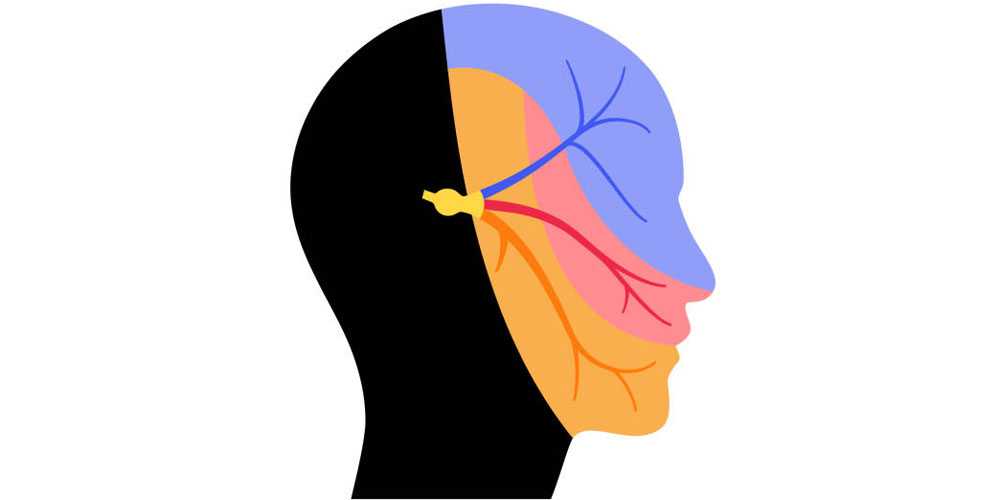Trigeminal neuralgia (TN) is a kind of neuropathic pain that affects the face. It has a substantial influence on patients' quality of life and physical function. Evidence shows that vascular compression of the trigeminal nerve causes localised demyelination and abnormal neural discharge. Secondary causes, such as multiple sclerosis or brain tumours, can also induce trigeminal neuralgia (TN). Each patient's treatment must be tailored to their specific needs. In the first-line therapy of trigeminal neuralgia (TN), carbamazepine remains the medicine of choice. When pharmacological therapy fails, less-invasive interventional pain therapies and surgery may be considered. Microvascular decompression may be beneficial to younger individuals. Percutaneous trigeminal nerve rhizolysis may be more appropriate for elderly individuals with less surgical risk.

The illness affects between 0.03% and 0.3% of the population, with an annual incidence of about 12 cases per 100,000 people. While it can develop at any age or gender, females have a greater prevalence, with an average beginning age of 50. Most instances of trigeminal neuralgia (TN) are idiopathic or caused by external vascular compression of the trigeminal nerve, which causes degradation of the myelin layer that protects the nerve. However, any ailment that causes nerve damage might cause the formation. However, any disorder that causes nerve damage (e.g., multiple sclerosis, neural tumours, face trauma or surgery, and systemic illnesses) might cause the development of trigeminal neuralgia (TN).
The presence of abrupt, intermittent, acute burning or stabbing-like unilateral face pain in the distribution of one or more branches of the afflicted trigeminal nerve is diagnostic of trigeminal neuralgia (TN). The painful episodes typically last a few seconds to minutes and can occur spontaneously or in reaction to a non-painful input (for example, when doing tasks requiring facial motions). Furthermore, the severity of the episodes tends to deteriorate over time, resulting in fewer pain-free periods and greater difficulties controlling symptoms. The patient's medical history and clinical examination data are used to make the diagnosis of trigeminal neuralgia (TN). However, appropriately diagnosing this illness can be difficult since the symptoms are similar to those of many other conditions that cause facial discomfort, such as post-herpetic neuralgia, cluster headaches, and temporomandibular joint dysfunction. As a result, several neurological tests are usually performed to rule out possible disorders.
Trigeminal neuralgia (TN) pain may frequently be treated with medicines such as anti-epileptic drugs or tricyclic antidepressants. Nonetheless, when the condition advances, conservative therapy may fail to successfully manage the symptoms. As a result, interventional treatments for trigeminal neuralgia (TN) include neurectomy, balloon compression, microvascular decompression, stereotactic radiosurgery, and radiofrequency ablation (RFA). Radiofrequency ablation RFA is a method that uses radio waves directly on the nerve to block nociceptive transmission. Because of its good therapeutic success rates, minimally invasive nature, and safety profile, it has proven to be a successful therapy method for TN. RFA is divided into two types: continuous radiofrequency (CRF) and pulsed radiofrequency (PRF). While CRF uses a constant application of high temperatures to generate thermocoagulation and necrosis of the targeted tissue, PRF uses a pulsed sequence and lower temperatures to deliver radio waves to the nerve. Despite its effectiveness, RFA is linked with a variety of risks and consequences, which vary based on patient characteristics, trigeminal neuralgia (TN) aetiology, and other contributing variables.
Radiofrequency ablation (RFA) is a viable therapy option for trigeminal neuralgia (TN) patients, offering considerable pain alleviation as well as an improved quality of life. More research is required to compare the long-term effects of RFA with other therapies and to find the best patient selection criteria. It is nevertheless a safe and effective alternative to other surgical treatments, and it should be regarded as a therapy option for trigeminal neuralgia TN patients.
Frameless Stereotactic Radiosurgery
Laser Disc Decompression
Radiofrequency Ablation for Trigeminal Neuralgia
Radiofrequency Ablation for Back Pain & Neck Pain
Minimal Invasive Spine Surgery
Spine Stabilization
Cranial Micro Neurosurgery
Cranio Spinal Trauma
Endoscopic Neurosurgery